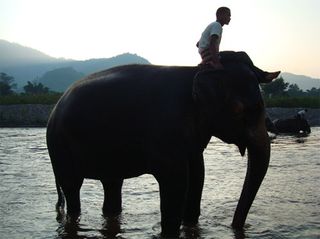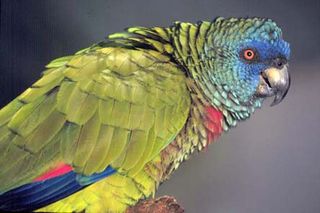In the first edition of this series, I introduced you to a well-constructed book by the Heath brothers entitled, "Switch: How To Change Things When Change Is Hard."
The authors consolidate a lot of information about the major elements of change, including how to create change, in their very concise, easy to read book. The brothers liberally borrow their basic analogy around the elements of change from Psychologist and Researcher, Dr. Jonathan Haidt. They explain that change involves two parts of the whole person that we are all familiar with….a person's emotional side, as well as their brain's rational side.
 As I mentioned before, to create change, you must impact both sides. The overpowering emotional side is identified as the "Elephant," and the rational, decision-making component sits atop the Elephant as the "Rider." When conflict arises between the two, the Rider is easily the underdog (I addressed "the Rider" in last week's edition).
As I mentioned before, to create change, you must impact both sides. The overpowering emotional side is identified as the "Elephant," and the rational, decision-making component sits atop the Elephant as the "Rider." When conflict arises between the two, the Rider is easily the underdog (I addressed "the Rider" in last week's edition).
Research tells us that in order to achieve lasting change, the Elephant and Rider need to unite. Lastly, you must provide a clear PATH. In this edition I'll provide for you some examples of motivating the elephant.
MOTIVATING THE ELEPHANT — The following are techniques that can help you tap into a person's emotional side (Elephant), which can spark actions that will lead to lasting change.
Find the Feeling. Most of you can relate to the necessity of "feeling" the need to change in order to provide the rocket fuel and begin the necessary work to actually make the change happen. I can personally remember, while in graduate school class, a guest lecturer spontaneously changing his topic from whatever practical, cerebral lesson he was sent there to instruct…to telling my class: "What you're learning here is less important than how badly you want to be good at what you do." He continued, "And furthermore, how good you are, will determine EVERYTHING… Your reputation, where you work, how much you make, your options in life, and most importantly, the satisfaction you will gain from a life well-lived." I can vividly remember him stating that, "Mediocrity will get you nowhere." After hearing this, I took a long walk and introspected more deeply than I had in a long time. Those words motivated the Elephant in me, and gave the Rider (my brain) the energy needed to alter my behavior (not only "getting through" school but excelling) and sustain my tenacity for a long time. It's not that the pure content lectures were unimportant, but this one altered something deep and enduring inside me.
Shrink the Change. In the book, the authors speak of a car wash that ran a promotion using loyalty cards. They tested two variations of customer cards to see which worked the best. One card was an 8-stamp card, earning a free car wash when the card is filled. Another card was a 10-stamp card, but already had 2 stamps completed, advancing them 20% toward their goal, but, in reality had the same amount required. Several months later, only 19% of the customers given the empty 8 stamp card had received a free car wash, in contrast to 34% of the head-start group. The authors state that this type of behavior is found in multiple studies. In other words, people find it more motivating to be partially finished with a long-term goal than to be at the starting gate of a shorter one. How could you motivate your agents or managers to achieve a long-term goal by highlighting what's already been accomplished toward its completion? To motivate an uninspired Elephant, shrink the change.
Grow Your People. Change is very difficult if people believe that they can't change, or that they don't have any influence. In past blog editions, I've written about the "Growth Mindset," an empirically verified set of facts that will determine the percentage of people who will thrive in your organization. The Heath brothers list several examples to further the power of believing that people can grow and change. Here's just one example:
In 1977 the St. Lucia parrot faced extinction. Despite laws and several "carrot and stick" attempts to change the fact that Island natives undervalued the bird, nothing changed. Some even continued to eat the bird as a delicacy, while others turned their backs. All analytical cases for protecting the bird had failed. So instead, the government implemented an emotional appeal. To do this they set out to convince St. Lucians that they were the kind of people who protected their own (there is much research confirming that people will live up to a collective belief system about "who" they are). They did this by making the public assumption that St. Lucians swell with pride over their exclusive Island parrot. The Parrot Campaign included T-shirts, bumper stickers and locally recorded songs about the Island's pride around their parrot. In fact, the bird became part of the natives' national identity and it was constantly being compared to other "uglier" national birds, including our own Bald Eagle. Stories published in 2008 noted that St. Lucians had not been caught shooting the parrot for the past fifteen years, resurrecting the species from extinction.
How can you find the feeling, shrink the change, and grow your people to accomplish the "impossible?"
I am very excited for the next edition…the final piece of change — Clarifying the Path.

